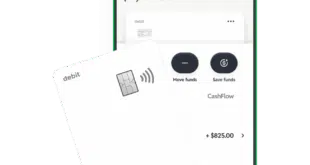It’s okay to be concerned about duplicate-check presentment, but new and existing technology can keep the risk under control, says Bob Meara.
Banks still on the mobile RDC sidelines because they fear RDC risk are more susceptible, not less, to returned-item loss.
Bob Meara is a senior analyst at Celent, a division of Oliver Wyman. Reach him at bmeara@celent.com.
The Federal Financial Institutions Examination Council’s “Guidance on Remote Deposit Capture Risk Management,” published in early 2009, was a watershed event that ushered in widespread concern about the risks inherent in remote deposit capture (RDC). The guidance was promulgated by regulators who had no operational experience with the technology.
Banks did what they had to do: They devoted extraordinary effort to ensure regulatory compliance. Vendors were also busy enhancing the risk-management capabilities of their solutions. Now, these capabilities give banks extraordinary leverage to manage check-deposit risk—more than most banks ever had at the teller line.
Over the same period, RDC evolved from the business-only product of its genesis to what is quickly becoming a mainstream consumer self-service deposit mechanism. Check capture by smart phone, if not yet commonplace, is being offered by more and more financial institutions.
But not to everybody. Far from it. The majority of U.S. banks restrict usage because of what Celent views as largely misplaced risk concerns.
Plenty of Tools
In all of this, it’s important to realize that the belated FFIEC guidance did not result from egregious losses stemming from RDC abuse over the previous four years. Instead, the guidance was meant to be preventative. Indeed, Celent finds little evidence of ongoing operational losses from RDC. In three consecutive annual surveys of RDC-deploying financial institutions, nearly 90% reported having suffered no RDC losses at all. And, losses among the other 12% were not recurring events.
So, are the widespread risk concerns warranted?
Those who insist that RDC-gathered deposits are inherently risky have Check 21 to blame. After all, it was the 2003 Check Clearing Act for the 21st Century that created the legal footing for clearing and settlement without original items. Since Check 21 didn’t require banks of first deposit to have original items either, RDC was born.
And, what’s the inherent risk? Arguably, the only mechanism unique to RDC is loss resulting from duplicate presentment. Keep in mind, though, that duplicate-presentment risk doesn’t just occur in the RDC channel. Banks have suffered deposit losses at the teller line among deposits previously captured using another bank’s RDC product. Let’s assume such things will begin to happen with some regularity. Then what?
Beyond defensible know-your-customer procedures, what is available to help banks mitigate check-deposit risk? Plenty! Most banks (or their item-processing service providers) already have enterprise duplicate-item detection capability. Those relatively few that don’t need to make an investment.
And in some cases, no such investment may be necessary. COCC, a Connecticut outsourced processor, announced in June 2011 that it would provide duplicate-presentment detection for all its item-processing clients at no charge.
You Decide
More third-party processors will likely follow. In March 2013, Early Warning Services announced a pilot for an enhanced version of its Deposit Chek Service that includes duplicate-item detection among participating financial institutions.
A sophisticated deposit-review mechanism should also be in every bank’s toolbox. Modern systems are able to provide near real-time views of deposit activity across channels, place limits on deposits, and flag unusual activity for speedy review by trained personnel.
Many systems also can be set to flag items that have a mismatch between the item’s dollar amount and the depositor’s stated deposit amount along with routing-and-transit number validation and optional image-based check-fraud detection—all prior to posting. Contact your vendor if you need more information.
Invariably, banks reluctant to offer mobile RDC assert that deposits made at bank branches are less risky. Really? Only a small minority of FIs have teller image-capture systems. So consider two scenarios: a non-teller capture branch deposit compared to RDC using a modern deposit-review system. You decide:
In Celent’s view, banks still on the mobile RDC sidelines because they fear RDC risk are more susceptible to returned-item loss through obsolete branch deposit-taking workflow. A less risky, lower-cost approach invites image capture at each point of presentment alongside modern, image-based risk-management approaches.
Non-teller capture branch deposit vs. RDC using a modern deposit-review system
Branch Depost
Deposit review is conducted manually (if at all) by tellers in a distracted and hurried environment.
If item detail is captured at all at the branch, most include check amounts only. Tellers are focused on completing the transaction.
Teller visibility is limited to a single deposit.
Fraud systems don’t see the item until hours later, often not until day 2, depending on when image capture occurs.
With typical branch deposits, transit items aren’t presented until late in the day.
Funds availability is a function of policy and Reg CC—without regard to characteristics of individual depositors.
Remote Deposit
Deposit review conducted by trained specialists in the back-office.
Check codelines are captured and verified in real time. Suspects are flagged immediately for review and possible hold.
Back-office personnel often have an enterprise-wide view of account trends and activity.
Optional real-time interface to fraud and positive-pay systems. Multiple risk filters examine all items in real time, flagging unusual activity or suspect items for operator review.
Transit items are presented for clearing and settlement throughout the day, accelerating payment and returns.
Funds availability may be negotiated based on customer risk ratings as part of a unique deposit-services agreement.




